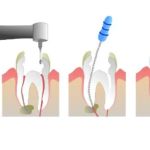Causes and Symptoms of Gingivitis in Children
- 1. Understanding Gingivitis in Children
- 2. Causes of Gingivitis in Children
- 3. Symptoms of Gingivitis in Children
- 4. Treatment for Gingivitis in Children
- 5. Preventing Gingivitis in Children
- 6. Real-Life Case Study: Gingivitis in Children
- 7. Take Action: Protect Your Child's Oral Health
1. Understanding Gingivitis in Children
Gingivitis is a common form of gum disease that can affect children, causing inflammation, redness, and irritation of the gums. It occurs when plaque builds up on teeth and affects the gums. Although gingivitis is mild compared to other types of gum disease, if left untreated, it can progress to more serious conditions like periodontitis. It's important for parents and caregivers to recognize the signs of gingivitis early to ensure proper treatment and prevent long-term oral health issues in children.
2. Causes of Gingivitis in Children
Gingivitis in children is typically caused by a combination of poor oral hygiene, genetics, and sometimes external factors like diet or medication. The most common causes include:
- Poor Oral Hygiene: Inadequate brushing and flossing allow plaque to build up on teeth, which irritates the gums.
- Diet: A diet high in sugary snacks and drinks can increase plaque buildup, contributing to gum disease.
- Inconsistent Dental Care: If a child does not visit the dentist regularly or neglects their dental routine, it increases the risk of gingivitis.
- Smoking or Secondhand Smoke: Exposure to smoke can weaken gum health, leading to gingivitis in susceptible children.
- Medications: Certain medications can reduce saliva production, creating a dry mouth that increases the risk of gingivitis.
3. Symptoms of Gingivitis in Children
Gingivitis can manifest in several ways, and early recognition of symptoms can help with prompt treatment. Common symptoms of gingivitis in children include:
- Red, Swollen Gums: Gums may appear redder than usual, especially along the gumline.
- Bleeding Gums: Gums may bleed when brushing or flossing, which is often one of the first signs of gingivitis.
- Bad Breath: Persistent bad breath or a bad taste in the mouth can be an indicator of gum disease.
- Soft or Tender Gums: The gums may feel soft to the touch or painful, making brushing and eating uncomfortable.
- Pocket Formation: In more severe cases, pockets may form between the teeth and gums due to gum tissue separation.
4. Treatment for Gingivitis in Children
Treating gingivitis in children involves improving oral hygiene and seeking professional dental care. The treatment plan typically includes:
- Professional Cleaning: A visit to the dentist for a thorough cleaning to remove plaque and tartar buildup is often required to treat gingivitis.
- Improved Oral Hygiene Routine: Teaching your child to brush their teeth at least twice a day and floss regularly can help reverse the effects of gingivitis and prevent it from returning.
- Antiseptic Mouthwash: A dentist may recommend an antiseptic mouthwash to help reduce bacteria in the mouth and promote healing of the gums.
- Dietary Changes: Limiting sugary foods and drinks can help reduce plaque buildup and protect gum health.
5. Preventing Gingivitis in Children
Prevention is key when it comes to gingivitis. Parents can help children prevent gingivitis by adopting good oral hygiene habits and ensuring regular dental visits. Here are some essential preventive measures:
- Encourage Proper Brushing and Flossing: Teach your child the importance of brushing their teeth twice a day with fluoride toothpaste and flossing daily to remove food particles and plaque.
- Regular Dental Checkups: Schedule routine dental visits every six months for professional cleanings and checkups to spot any early signs of gingivitis.
- Healthy Diet: Provide a balanced diet that includes plenty of fruits and vegetables while limiting sugary snacks and drinks that contribute to plaque buildup.
- Use Fluoride Products: Fluoride toothpaste and mouthwash can help strengthen teeth and prevent plaque buildup.
6. Real-Life Case Study: Gingivitis in Children
A real-life example is Emma, a 9-year-old girl who began showing signs of gingivitis, such as red, swollen gums and bleeding when brushing. Her parents took her to the dentist, where she received a professional cleaning and was instructed to follow a stricter oral care routine. After a few weeks of improved brushing, flossing, and reduced sugar intake, Emma's symptoms began to subside, and her gum health was restored. This case illustrates the importance of early intervention and consistent oral hygiene in preventing gingivitis from worsening.
7. Take Action: Protect Your Child's Oral Health
Gingivitis is preventable and treatable with the right approach to oral hygiene and regular dental visits. By taking action early, parents can ensure that their children maintain healthy gums and avoid the risk of more serious dental issues. For more tips on preventing and treating gingivitis in children, visit Dentistry Toothtruth for expert advice and products to support your child's oral health.







 Simply Beautiful Smiles of Abington, PA4.0 (142 review)
Simply Beautiful Smiles of Abington, PA4.0 (142 review) Ramsey Family Dental5.0 (93 review)
Ramsey Family Dental5.0 (93 review) Maple Drive Dentistry4.0 (207 review)
Maple Drive Dentistry4.0 (207 review) Dr. Steven R. Hart, DDS Devon Dental Associates0.0 (0 review)
Dr. Steven R. Hart, DDS Devon Dental Associates0.0 (0 review) Mundelein Dental Center3.0 (8 review)
Mundelein Dental Center3.0 (8 review) Compassionate Dental Care5.0 (34 review)
Compassionate Dental Care5.0 (34 review) The Importance of Oral Health Education During Pregnancy for a Healthy Pregnancy
The Importance of Oral Health Education During Pregnancy for a Healthy Pregnancy Best Tips for Brushing Your Teeth Properly for Healthy Gums: Essential Techniques for Oral Health
Best Tips for Brushing Your Teeth Properly for Healthy Gums: Essential Techniques for Oral Health Why Skipping Dental Checkups Can Lead to Bigger Oral Health Problems
Why Skipping Dental Checkups Can Lead to Bigger Oral Health Problems Advantages of Porcelain Dental Restorations
Advantages of Porcelain Dental Restorations How Can Diabetes Cause Tooth and Gum Problems? Preventing and Managing Oral Health Issues
How Can Diabetes Cause Tooth and Gum Problems? Preventing and Managing Oral Health Issues Healthy Habits for Promoting Good Oral Health and Hygiene: Tips for a Healthy Smile
Healthy Habits for Promoting Good Oral Health and Hygiene: Tips for a Healthy Smile